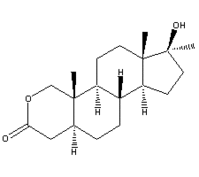On April 19, 2005 we spoke to Lisa Capaldini, M.D., an HIV specialist in San Francisco who alerted us to metabolic complications of HIV and antiretroviral treatment in 1997 (see AIDS Treatmenl News #277). We asked Dr. Capaldini for a brief overview of treating involuntary weight loss today.
Dr. Capaldini explained that a small but important group of patients is still wasting, although their HIV viral load is controlled. And a larger group has difficulty maintaining weight, due to queasiness, nausea, and anorexia (loss of appetite) with antiretroviral treatment. An additional problem is that if patients cannot eat, they' cannot take some of their medications with food as required. So involuntary weight loss can be a problem both for those with active wasting, and those who need help with antiretroviral side effects in order to be able to eat properly.
We noted a recent report on a new formulation of Megace (megestrol acetate), an appetite stimulant, to improve its absorption [1]--and asked about the reputation of megace for putting on weight by increasing fat and water--not helpful when the problem is muscle wasting. Dr. Capaldini agreed that this is a relevant concern. But as she explains to her patients, there are two issues: the body must get enough calories, and then must use them properly.
She noted that some doctors make the mistake of just giving Oxandrin (oxandrolone, an anabolic steroid, which helps build muscle mass), when the real problem is that the patient will not eat. Instead, these patients need an appetite stimulant, such as Megace, or Marinol--and then a separate assessment of whether there is a lack of lean body mass. One cannot reliably tell just by looking whether someone has too little lean body mass. Dr. Capaldini uses BIA (bioelectric impedance) to help determine whether this is the case.
We asked about the common belief that men using megace may need treatment with testosterone as well. Dr. Capaldini explained that there are two situations where this is true. Rarely, megace may cause adrenal dysfunction. And much more commonly, many patients who are being treated for weight loss have low testosterone already, and need treatment for it.
Dr. Capaldini noted that oxandrolone (used for treating muscle wasting) is a pure anabolic--it helps increase muscle mass, but does not have any androgenic (masculinizing) effect at all (this is why women can take the frill dose). In fact, oxandrolone can cause lower levels of testosterone. Therefore many studies of oxandrolone now give testosterone to help get everybody to a certain baseline level. Dr. Capaldini believes that all patients with HIV-associated weight loss should be screened for low testosterone (hypogonadism) and for depression.
Dr. Capaldini noted that just as there is no right antiretroviral for everyone, nutritional problems also can be multifactorial. Different patients may need very different approaches.
She also noted that for many people with HIV, HAART treatment (and medications to treat HAART side effects) will be lifelong; therefore it is important that these treatments be flexible and easy to use. This is why the new version of Megace is now being tested. [1] The current formulation can be a problem, because it is an appetite stimulant, yet must be taken with food in order to be absorbed well by the body. The new formulation (still experimental; it could be available as early as mid summer 2005) has a much smaller particle size so that it can dissolve better, even when the patient has not been able to eat.
References
[1.] RA Femia. Megestrol acetate nanocrystal oral suspension: results of dose-escalating studies under fed and tasting conditions. AmfAR National HIV/AIDS Update Conference, April 10-April 13, 2005 in Oakland, California, http://www.am far.org/nauc.
COPYRIGHT 2005 John S. James
COPYRIGHT 2005 Gale Group



